
Izzy. 28. White. She/they/he. Blog to help me develop my writing. It's kind of a mix between writing inspiration, writing tips, and my own writing. My projects are still in development (I've posted like. One excerpt). Originally was just focused on my story, Wanderer (hence, the name), but I expanded it.
360 posts
Character: Adopts Another Person, Or Two, Or Tenme, Immediately Falling In Love:
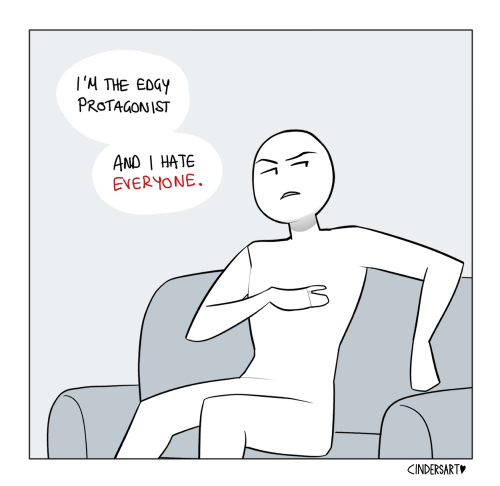
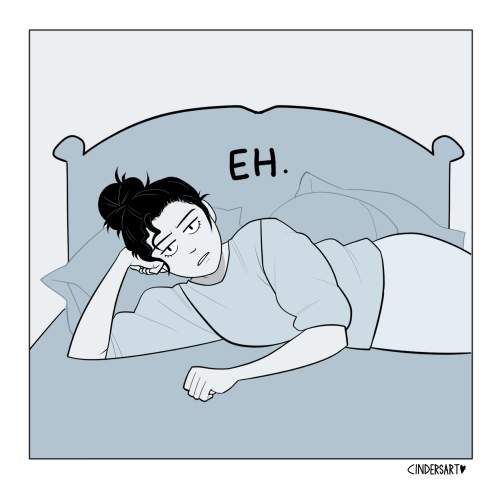


character: adopts another person, or two, or ten me, immediately falling in love:
-
 ozzytheplushiemonster liked this · 9 months ago
ozzytheplushiemonster liked this · 9 months ago -
 elly1233luv reblogged this · 9 months ago
elly1233luv reblogged this · 9 months ago -
 sky-wizards-blog liked this · 9 months ago
sky-wizards-blog liked this · 9 months ago -
 thedragonbonfeir liked this · 10 months ago
thedragonbonfeir liked this · 10 months ago -
 bangenksz liked this · 10 months ago
bangenksz liked this · 10 months ago -
 deathgonewrong liked this · 11 months ago
deathgonewrong liked this · 11 months ago -
 mushroominthesound liked this · 11 months ago
mushroominthesound liked this · 11 months ago -
 line-of-robin reblogged this · 11 months ago
line-of-robin reblogged this · 11 months ago -
 goldencoalcat liked this · 11 months ago
goldencoalcat liked this · 11 months ago -
 artsolotl-hours liked this · 11 months ago
artsolotl-hours liked this · 11 months ago -
 00x7 liked this · 1 year ago
00x7 liked this · 1 year ago -
 unprincledented liked this · 1 year ago
unprincledented liked this · 1 year ago -
 s7nnyflowers reblogged this · 1 year ago
s7nnyflowers reblogged this · 1 year ago -
 apawmeownyation reblogged this · 1 year ago
apawmeownyation reblogged this · 1 year ago -
 apawmeownyation liked this · 1 year ago
apawmeownyation liked this · 1 year ago -
 psykipz liked this · 1 year ago
psykipz liked this · 1 year ago -
 baconboimcgee liked this · 1 year ago
baconboimcgee liked this · 1 year ago -
 keeperofsecretsunderthehill liked this · 1 year ago
keeperofsecretsunderthehill liked this · 1 year ago -
 coldinpantsreboot liked this · 1 year ago
coldinpantsreboot liked this · 1 year ago -
 whomst-yall-reblogs reblogged this · 1 year ago
whomst-yall-reblogs reblogged this · 1 year ago -
 citrusscale-remastered reblogged this · 1 year ago
citrusscale-remastered reblogged this · 1 year ago -
 citrusscale-remastered liked this · 1 year ago
citrusscale-remastered liked this · 1 year ago -
 oriocookie reblogged this · 1 year ago
oriocookie reblogged this · 1 year ago -
 grrrrrrrbarkbarkbark liked this · 1 year ago
grrrrrrrbarkbarkbark liked this · 1 year ago -
 holycafe liked this · 1 year ago
holycafe liked this · 1 year ago -
 simpledontmeanpeachy reblogged this · 1 year ago
simpledontmeanpeachy reblogged this · 1 year ago -
 the-patchwork-girl-of-oz liked this · 1 year ago
the-patchwork-girl-of-oz liked this · 1 year ago -
 lunayue liked this · 1 year ago
lunayue liked this · 1 year ago -
 pretty-sweet-plums reblogged this · 1 year ago
pretty-sweet-plums reblogged this · 1 year ago -
 pretty-sweet-plums liked this · 1 year ago
pretty-sweet-plums liked this · 1 year ago -
 ellisper reblogged this · 1 year ago
ellisper reblogged this · 1 year ago -
 sharpdistances liked this · 1 year ago
sharpdistances liked this · 1 year ago -
 spheronite liked this · 1 year ago
spheronite liked this · 1 year ago -
 darkthestars reblogged this · 1 year ago
darkthestars reblogged this · 1 year ago -
 tired-reader-writer reblogged this · 1 year ago
tired-reader-writer reblogged this · 1 year ago -
 tired-reader-writer liked this · 1 year ago
tired-reader-writer liked this · 1 year ago -
 micequeer liked this · 1 year ago
micequeer liked this · 1 year ago -
 opossum-mypossum liked this · 1 year ago
opossum-mypossum liked this · 1 year ago -
 meteoratheopposed liked this · 1 year ago
meteoratheopposed liked this · 1 year ago -
 theancientvaleofsoulmaking liked this · 1 year ago
theancientvaleofsoulmaking liked this · 1 year ago -
 ariel-seagull-wings reblogged this · 1 year ago
ariel-seagull-wings reblogged this · 1 year ago -
 ariel-seagull-wings liked this · 1 year ago
ariel-seagull-wings liked this · 1 year ago -
 homocidal-god liked this · 1 year ago
homocidal-god liked this · 1 year ago -
 bal0neymalon3y liked this · 1 year ago
bal0neymalon3y liked this · 1 year ago -
 sarifel-corrisafid-ilxhel liked this · 1 year ago
sarifel-corrisafid-ilxhel liked this · 1 year ago -
 lunarlegend11 reblogged this · 1 year ago
lunarlegend11 reblogged this · 1 year ago -
 redgalexia liked this · 1 year ago
redgalexia liked this · 1 year ago -
 notarobot-lastichecked liked this · 1 year ago
notarobot-lastichecked liked this · 1 year ago -
 thatweirdfangirl23 liked this · 1 year ago
thatweirdfangirl23 liked this · 1 year ago
More Posts from Developingwanderer
If I could have your attention for one minute I want to talk about an upcoming game I’m REALLY excited about
It’s called Draconia and it’s an open-world survival sandbox RPG game where you play as a dragon.
If you’re like me you probably love video games and such that feature dragons BUT get frustrated that often the focus is on slaying dragons, or on human political intrigue, or some other non-dragon nonsense. Have no fear. Draconia is going to give us everything we crave.
It looks SUPER pretty





Choose one of several dragons, hunt to feed yourself, find water sources to drink from and develop your character through various tasks and events.
Draconia features:
Character Customization: Give your character a custom name, change its pattern, colors and body parts, such as horns or tail tips or choose from pre-made textures.
Character Leveling: Complete tasks, quests and events to level your character and make it stronger. Spend talent points to increase your dragon’s traits.
Optional PvP: Play on servers without being afraid of being attacked by other players. Simply disable PvP in your character profile and enable it if you want to have a battle with someone else.
Group and Clan System: Go on your journey and bring your friends with you by inviting them to your group or creating your own clan, which allows you to announce events and keep track of your members progress.
Create useful items: Build a hoard to hide all your treasures in, create objects which improve your dragons stats or add temporary buffs.
Nesting: Build and defend a nest and raise your own dragon hatchling.
Questing: Find and complete several one-time and repeatable quests.
Interactive Environment: Interact with several objects in your environment to gain useful buffs or uncover more parts of the story.
Dragon Dens: Earn yourself a place you can call home. Unlock and upgrade your own den to live a more comfortable dragon life.
It will have a single-player offline mode and an online mode where you can interact with others, either with or without PVP.

Your character is customizeable and if they meet their stretch goals, new players could even start out as hatchlings. If you pledge enough money on their crowdfunding campaign, you can get custom decorations, items, even another species!

You will be able to play as many different species, 6 species of dragon and various smaller wildlife. Another stretch goal is to build a humanoid species that has mechanics for farming and dragon breeding and riding.






Draconia is currently trying to fund its project through Indiegogo. (Link) They are not offering exclusive content as a play-to-win system and nothing will be behind a paywall.
This game looks extremely beautiful, well thought out, and fun to play. The creators clearly care a lot about this and have put their heart and souls into it. I want to see this happen. It will be released on Steam. If this seems like something you would like to play or exist, please consider contributing to their Indiegogo or Patreon, or reblogging this to get the word out! Thanks :)
Link to Indiegogo (the main campaign)
Link to their Patreon
Link to their website
Link to their Discord Server
Link to their Reddit page
Link to their Twitter
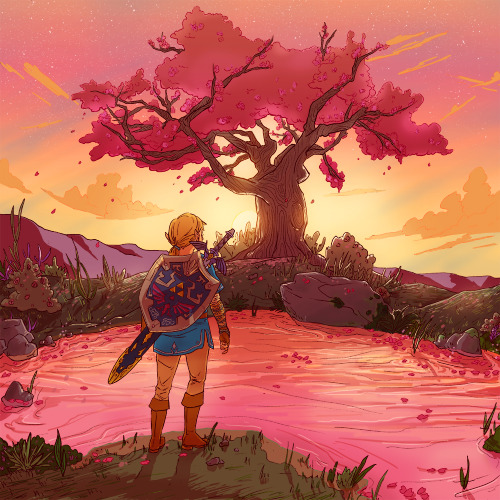
botw is such a beautiful game and i had a hard time picking just one landscape to draw!!
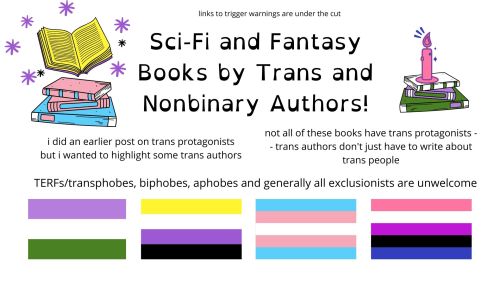
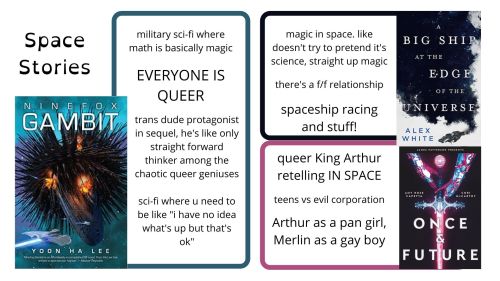
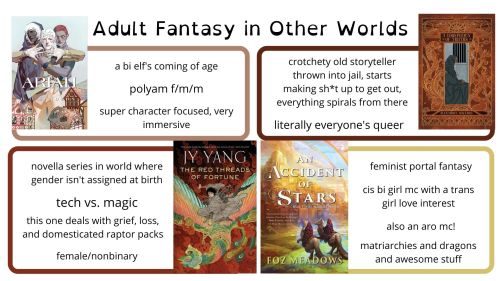
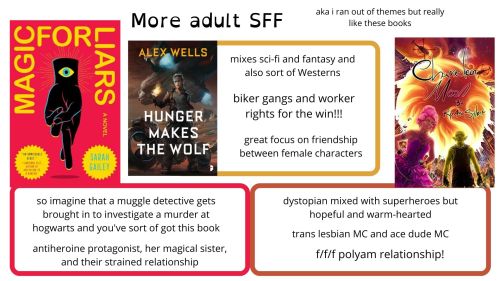
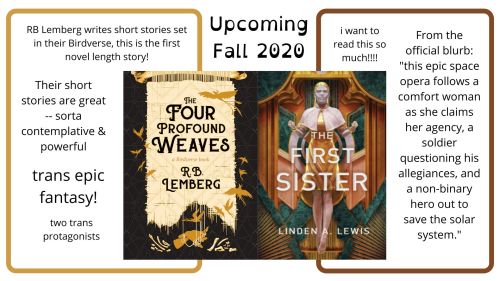
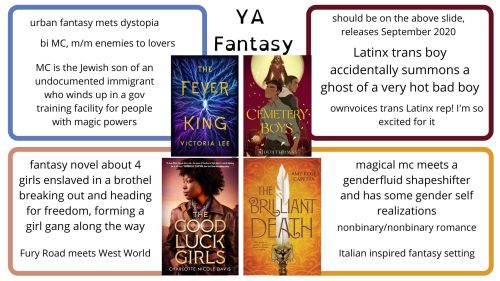
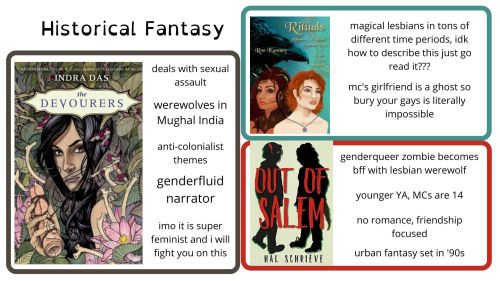
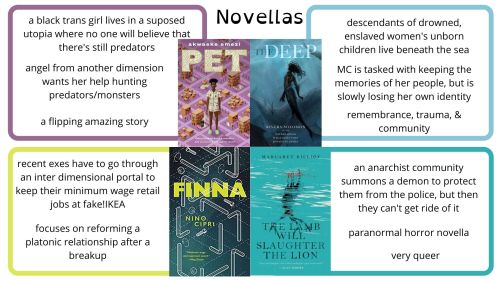
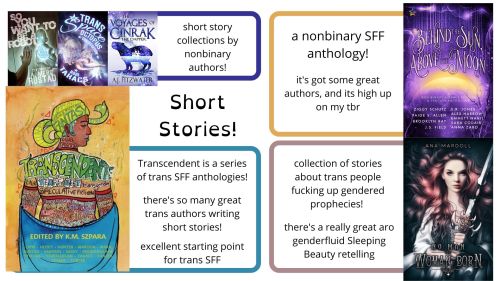
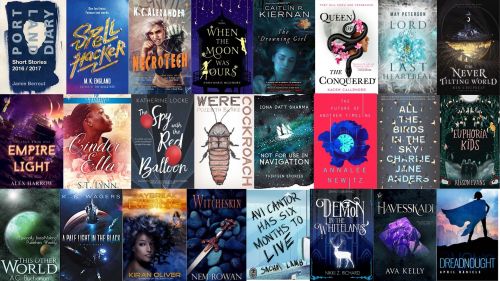
I’ve been working on this post on and off for the last few months. I always intended to post it during Pride Month, and hey, here we are. I’ve got a lot going on in my life right now, so this might be the last book rec post for quite a while.
When possible, I’m linking to the Queer SFF Book Database since it has information on trigger warnings and links to reviews by queer readers. When not in the database of 6/15/20, I’ll be linking to Goodreads. Links are all below the cut.
Do not recommend cis authors on this post. This post is for centering trans and nonbinary authors. Please note that trans people write all sorts of stories and protagonists, and these books don’t automatically have trans or queer protagonists.
My master list of book rec posts is here, if you want to find more.
If you’re looking for a starting place on trans SFF, I strongly suggest the Transcendent anthology series as an overview. It’ll introduce you to a wide array of incredible stories from trans and nonbinary authors.
This list does not cover all of the amazing trans and nonbinary authors writing science fiction and fantasy! There are many more, and please feel free to suggest them here.
If you see any exclusionists or TERFs on this post, let me know without engaging and I will block them ASAP. I would prefer to keep this post a safe, positive place for trans readers.
Keep reading
A couple notes on eye color descriptions:
First, eyes are small. If someone is more than a few feet away, there’s very little chance they will notice someone else’s eye color. Same is true if it’s dark or if they’re wearing glasses.
Second, people don’t pay that much attention to eye color. Most people don’t think of others (I don’t think) in terms of eye color. I’m not actually sure of the eye color of most of my relatives or friends
Third, this is in no way a useful descriptor unless it plays an important role in the story. Harry Potter’s eye color mattered because of his mother. Hermione’s eye color didn’t.
I know eye-color hair-color skin-color is a common descriptor for people when they’re first being introduced, but try something else, and stop relying on a thing that doesn’t matter. And, especially if the story is in first person or close third person, stop having people be able to tell eye colors from unrealistic distances or in unrealistic situations, or when they wouldn’t have any reason to pay attention to them.